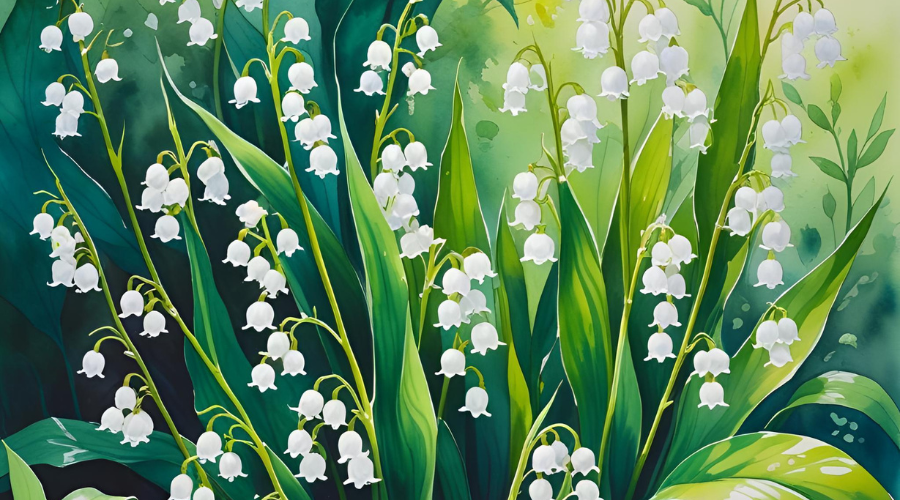
Lily of the Valley
Japanese Name
すずらん
suzuran
Description
- Lily of the valley is a small flowering plant known for its delicate, bell-shaped white flowers and sweet fragrance. It usually blooms in spring and grows in cool, shaded areas. Although it looks beautiful and pure, all parts of the plant are poisonous if eaten. In many cultures, lily of the valley symbolizes happiness, purity, and the return of spring.
History
- Historical Significance: Lily of the Valley has been cherished for centuries in folklore and tradition. In medieval Europe, it symbolized purity, humility, and happiness. It was often used in wedding ceremonies and religious rituals.
- Cultural Impact: The flower is associated with spring and renewal, often blooming in May. It is the national flower of Finland and the emblem of the French celebration “La Fête du Muguet” (Lily of the Valley Day), where it is given as a token of good luck.
- Medicinal Use: Historically, it was used in herbal medicine for heart conditions, though it is toxic if ingested improperly.
- Botanical Characteristics: Its sweet fragrance and delicate appearance make it popular in gardens and floral arrangements.
Learn more Japanese words?
Play our free typing game and master Hiragana & Vocabulary in a Zen atmosphere. 🍵
🎮 Play Game